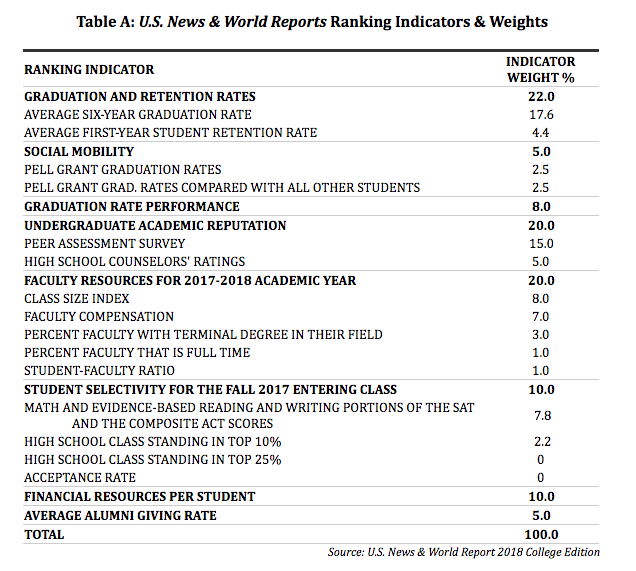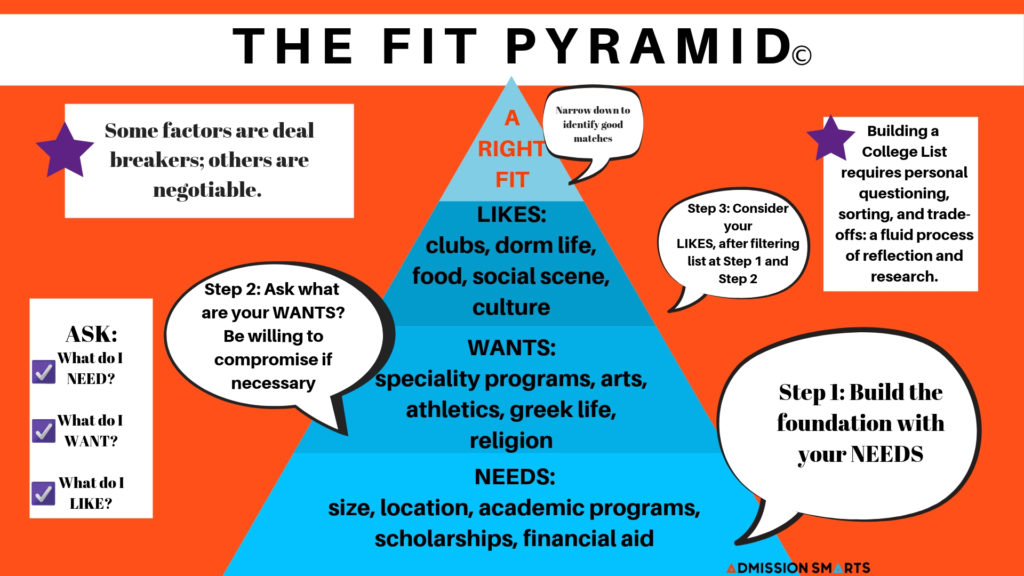
How should you factor published college rankings into your college search?
Since 1983, U.S. News & World Report has published a much-anticipated annual issue that ranks American colleges and universities. Each year’s College Edition sets off an annual chorus of criticism that The Atlantic’s Derek Thompson refers to as “a national carpfest.” Before we get to that, let’s consider what U.S. News is trying to accomplish.
U.S. News devotes substantial effort every year to compiling and analyzing data from more than 3,000 four-year colleges and universities. Their findings compare schools on a level playing field, which is assured by calculating scores using one common algorithm that incorporates the factors believed as most important in determining schools’ quality of education. Their quality indicators are noted in Table A, below, along with the weights assigned to each.

Table A: U.S. News and World Reports Ranking Indicators and Weights

Remember, colleges are not refrigerators.
Why Colleges Can’t Be Ranked Like Home Appliances
There are many criticisms levied at the U.S. News College Edition, too many to enumerate here. However, we feel that a single, major objection is sufficient to justify ignoring them. Their methodology does not and cannot measure the qualitative factors that matter most to individual students with unique talents, goals, preferences, personality, experience, skills, strengths, and weaknesses. The identification of your best-fit schools should be a subjective analysis, one that isn’t amenable to quantitative, algorithmic analysis.
Please note that, although U.S. News is the most popular, there are other reputable periodicals that publish annual college rankings, including Forbes, Princeton Review, Money, Barron’s, College Atlas, The Economist, and New York Times Higher Education. These are all unbiased sources that process the same data sets from colleges. They generate slightly different rankings due to their distinctive methodologies. All claim to use the best methodology. The main objection to college rankings stated above applies to all of them.
When purchasing a product like a refrigerator, car, or TV, a publication that assists decision-making like Consumer Reports may provide helpful information by conducting research and analysis and testing products in a given category. The insights revealed by testing products within this sort of criteria are straight forward and lead to dependable rankings from “best-buy” on down.

This pyramid chart offers a better way to evaluate the colleges you’re considering.
The Missing Factors in College Rankings
The fact is that choosing a college is not the same as buying a TV. Seems obvious, right? The best school for you is unlikely to be the best school for your best friend. The key attributes of a college that are important to you are those that can’t be reduced to comparative metrics. These include its mission, curriculum, approach to learning, majors and academic programs, physical plant, campus life and amenities, student body characteristics, and academic environment, i.e., the non-quantifiable factors. Among all the criticisms of college rankings, this one is salient and irresolvable.
Choosing Your College With Meaning
At AdmissionSmarts, we spend time with you to learn your educational goals, academic profile, personality, financial needs, values, and preferences. We sort through your priorities and help you establish what best fit means to you. We never allow prestige or rankings to drive the process. Your college goals and aspirations cannot be reduced to an algorithm. Although we can’t make this process less complicated, we do make it far less stressful for you. You should be confident that your schools are all great matches for you no matter where they may stand in a magazine’s rankings.